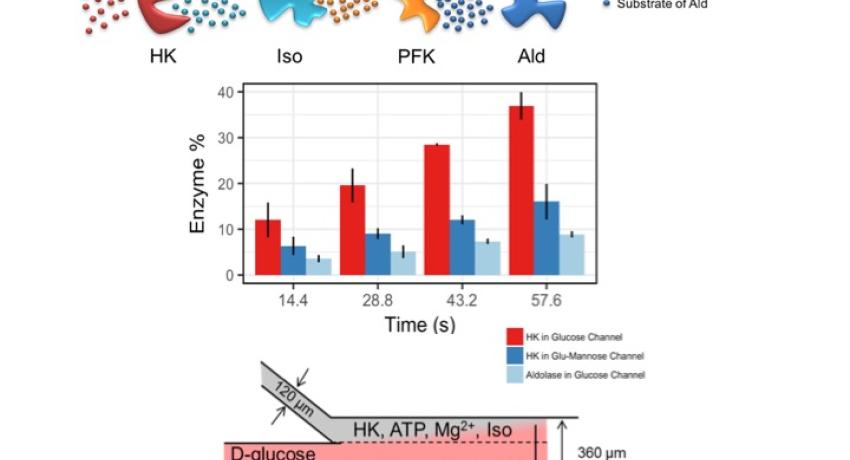Enzymes along a metabolic pathway in which the product of one is the substrate for the next tend to associate through a process of sequential, directed chemotactic movement. The extent of enzyme migration is proportional to the exposure time to the substrate gradient.
Enzymatic catalysis is essential to cell survival. In many instances, enzymes that participate in reaction cascades have been shown to assemble into metabolons in response to the presence of the reactant for the first enzyme. However, what triggers metabolon formation has remained an open question. Through a combination of theory and experiments, we show that enzymes in a cascade can assemble via chemotaxis. Each enzyme independently follows its own specific reactant gradient, which in turn is produced as a product of the preceding reaction. Our observations point to a new strategy for time-dependent, sequential self-assembly of catalyst particles.
Credits/Names: Zhao, X.; Palacci, H.; Yadav, V.; Spiering, M.; Scott, J.; Linderberg, K.; Gilson, M. K.; Butler, P. J.; Benkovic, S. J.; Sen, A. Chemotactic Assembly in Active Enzyme Cascades. Nat. Chem. 2018, 10, 311 -317.
Download PDF Version: IRG2_Enzyme Cascade highlight for annual report.pdf
Year of Highlight: 2019
IRG: IRG2 - Nanomotors


